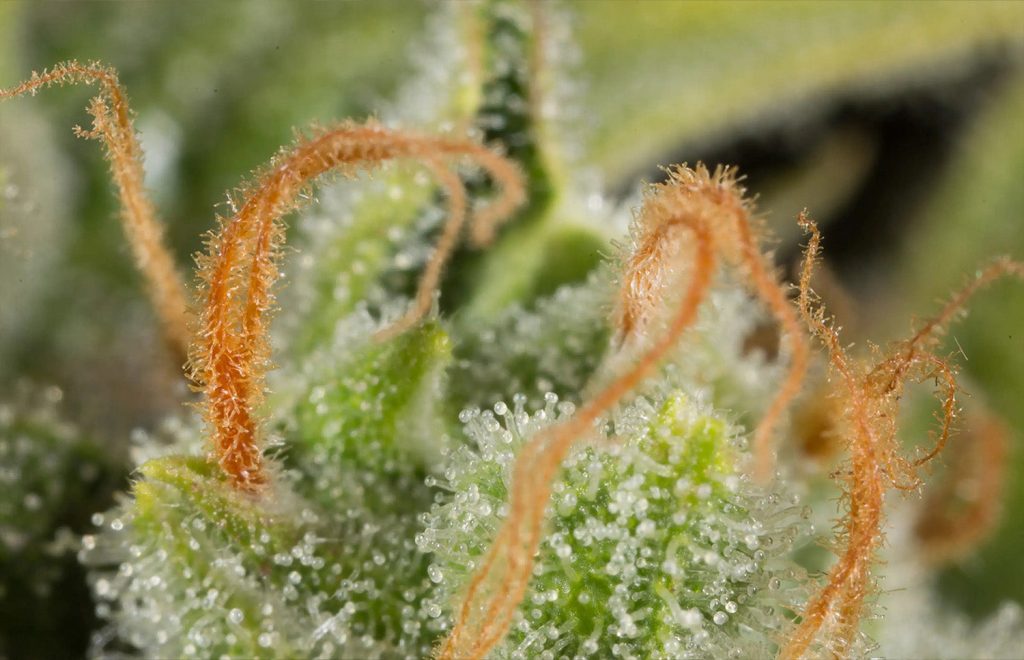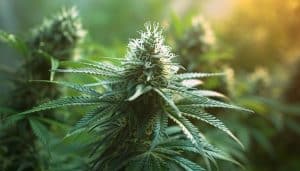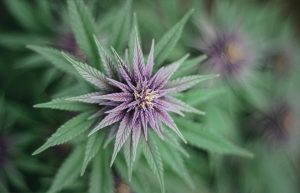- Alternaria belongs to the family of cryptogamic diseases, it is a fungus that one occasionally meets in the cultivation of cannabis.
- However, even if its appearance is infrequent, the alternaria can cause wreaking havoc in the heart of many plant crops. Once the disease is installed in a cannabis culture, it could stay there for a fairly long period, because the symptoms can be misleading, they can therefore be confused with those produced by other molds.
- During this article, we explain to you concretely what alternaria is in detail, what are the conditions for its appearance, what are the prevention measures to avoid an attack, and finally how to effectively fight it to eliminate it definitively of our dear cannabis plants.
- What is alternaria?
- What are the conditions promoting the appearance of alternaria?
- What are the prevention measures to avoid an alternaria attack?
- How to eliminate alternaria in the cultivation of cannabis?
All cryptogamic disease can have dramatic consequences at the heart of a cannabis culture, Because fungal plagues such as alternaria, botrytis, mildew, fusarium, powdery mildew or pythium are not always easy to identify, then eliminate.
For cultivators who lack experience, it can quickly become a real hell, because some of them have fairly similar symptoms, it is therefore not so easy to distinguish them from each other, to finally take note of the Application of treatment suitable for each of them.
We recommend using biological fungicides as far as possible, for the right preservation of the environment, use chemical treatments When you have no other alternative. Moreover, alternaria, Fusarium And Pythium, attack the roots directly in the soil, which makes us the task more difficult, because this underground part of the substrate is inactible to be analyzed by our eyes.
WHAT IS ALTERNARIA?
Alternaria is a pathogenic fungus that belongs to the family of Pleosporaceae, which is simply a category bringing together no less than 44 fungal diseases which are harmful for the cannabis plant, as for many subjects of the plant world.
As with many parasitic mushrooms, its spores Can remain in latency (sleep) for a long period in the ground, before finally meeting the ideal conditions for their development on our dear plants. Alternaria, particularly appreciates the presence of dead leaves or decaying organic waste in order to colonize the environment and also to reproduce.
Alternaria Alternata is also able to impact man, because the World Health Organization (WHO) estimates that about 10 to 15% of the world’s population Demonstrates a form of allergy to these parasitic mushrooms. This cryptogamic disease is capable of also provoking skin or respiratory disorders, such as rhinitis, asthma in the bronchi etc. In addition, it seems that he would cause the loss of 15 to 20 % of agricultural crops Around the globe each year.
An alternaria attack is characterized when it appears, by fairly dark graying circular spots, which evolve towards the brown even the black on the leaves, but also on the different plants from your garden. These spots have an appearance necrotic with a yellowish outline, they can reach up to 2.5 cm in diameter and are most often delimited by the main ribs of the leaves.
We quickly witness a Generalized slowdown in growth or bloom, by giving us the impression visually that the plants suffer from several nutrient deficiencies.
WHAT ARE THE CONDITIONS PROMOTING THE APPEARANCE OF ALTERNARIA?
The mycelium of the alternaria reaches the fullness of its optimal development, when we approach temperatures equivalent to 27 or 28 ° C. We observe the formation of spores of this fungus at a temperature between 20 and 23 ° C, which are then distributed in the interior or exterior environment, either by fans or by the winds offered by Dame Nature.
These spores are very volatile in the air, they require a fairly stable surface to establish a new colony and reproduce. They can really accommodate anywhere thanks to their microscopic size, it is for the same reason that if they manage to fix themselves on the surface of the ground, it could also cause an infection in the roots of the plants, because the Contamination in the depth of the substrate would be made through the water of the nutrient solution.
You will understand, Alternaria needs hot temperatures and a high humidity rate To meet optimal development in the best conditions, with also the need to have leaves or other plant waste at its disposal to establish and reproduce. It is also necessary to pay attention, because these parasitic diseases can occur due to a prior attack of parasitic insects such as aphids, which could sufficiently weaken the immune system of plants and thus facilitate the appearance of this fungus.
Aphids can also play the role of vector of transmission of the disease between the different plants in your cannabis culture, because they can suck the sap of the leaves, or stems of different plants, and ultimately contaminate these gradually, when ‘They eat daily.
These same aphids could possibly make their arrival, following the presence of the alternaria, because whether insects or parasitic mushrooms, they most often occur because the natural defenses of the plant are weak, regardless of that the latter is in the growth or flowering phase.
Often, the plant’s immune system is weakened because the soil activity is unbalanced, because the latter does not receive the good amounts of water and nutrients necessary. This is the reason why we said a little higher than these symptoms can be misleading. It is also quite possible to confuse them with those produced by parasitic mushrooms such as the Pythium (melting of sowing) where the fusarium, because there are fairly strong similarities in terms of expression of their characteristics.
They all have hot temperature needs and a high humidity level to make their development as possible as their presence in the roots. These are concretely parasitic fungi that attack the roots implanted in the soil and which can be responsible for the melting of sowing (Damping Off) in the heart of many agricultural cultures. It is fundamental to take the time to do the necessary research before Select the varieties of high quality cannabis seeds that you are going to buy.
It is crucial to ensure that these cannabis varieties are able to resist a high humidity level in the air as in the soil, with which plants could be confronted during abundant water precipitation, as if attack potential by fungi or parasitic insects.
WHAT ARE THE PREVENTION MEASURES TO AVOID AN ALTERNARIA ATTACK?
In order to avoid being confronted with the presence as well as the ravages of this cursed mushroom, we advise you to watch out for a periodic cleaning exhaustive within your interior culture space, picking up all dead leaves Like the set of plant waste who is there. As a prevention, you could consider the application of different fungicidal products from the floor to the ceiling of your space, in order to start your next indoor culture in a completely sterile environment.
This approach, will allow you to avoid paying the costs with many harmful fungal phenomena of this type, and at the same time this produces another additional beneficial effect, because we will thus avoid the potential arrival of different species of parasitic insects Like aphids, colchenilles, red spiders, thrips, nematodes etc.
Regarding outdoor culture, it is an aspect that is more difficult to control because it is not a closed environment. Good advice that we can give you is the application of a wide spectrum preventive treatment at the end of the growth period, in order to start the flowering of your cannabis plants in the best conditions.
Good ventilation is also the key to success in an indoor culture, because the accumulation of humidity associated with poor ventilation in various places in space, is ideal for the development of spores on the plant parts of the plant as the leaves, the stems or the heads, which will allow the imminent arrival of a fungus like powdery mildew, Mildew, Botrytis, Pythium or Fusarium.
It is also necessary to obtain a temperature as stable as possible (between 20 and 25 ° C maximum), like a humidity rate adapted to each step of the growth (70 to 80% for seedlings, 63 to 70% For fairly large plants) like Flowering (45 to 55% maximum).
It should not be forgotten that the melting of sowing is most often irreversible, for young seedlings from the best quality or sowing during the growth phase, because the suitable treatment may not be effective enough to fight against the fungus At this stage, because the plant’s immune defenses are still too weak to counter the attack on these molds, expressed through scattered spots at that time.
Above all, you should never consume cannabis flowers posted by these molds, because it is clearly bad for health, this can cause serious respiratory problems.
Learn to carry out watering adapted to the precise needs of your water and nutrient plants, in terms of quantity as well as a well -adjusted pH of the nutritional solution and the substrate, because it will be much more profitable in terms of their food balance And this will save you many misadventures with these fungal phenomena, as with different species of parasitic insects. Another important thing is to always use a new substrate when starting each new culture cycle.
A final biological prevention measure, you can prepare a horsetail decoction that you will apply by spray during the vegetative phase, it is a very natural and very effective product. This natural treatment will effectively neutralize the action of spores within cultures.
HOW TO ELIMINATE ALTERNARIA IN THE CULTIVATION OF CANNABIS?
If despite all the advice that we have given you above, such as regular cleaning and implementation of all the preventive measures mentioned above, and you encounter persistent problems with one or more of these phenomena harmful fungals, then you will have no other choice than to use chemicals.
We always prefer to avoid the use of chemicals as much as possible, but there is sometimes no other alternative solution to protect our agricultural crops such as our cannabis plants. In this case, therefore of last resort, you can consider the use of broad spectrum fungicides such as Mancozeb Or Maneb.
There are also copper -based fungicides very effective in eliminating these molds, as Bordeaux porridge, Clorotanolil Or Zineb. In the event that you are led to use fungicides made from chemicals such as those mentioned here, so we recommend that you start by strictly reading all the information concerning their use as The various safety measures to be continued.
It is fundamental for your health, to always think of protecting yourself from suitable safety equipment (combination, mask, gloves, specific shoes, etc.).



